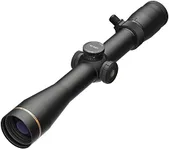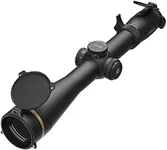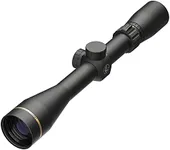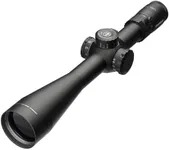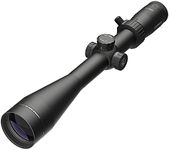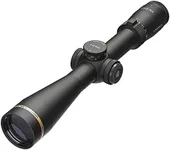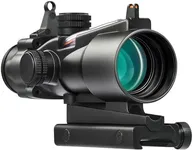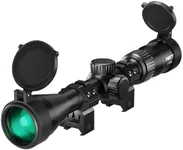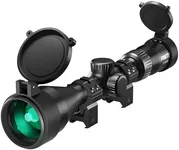Buying Guide for the Best Leupold Scopes
Choosing the right scope for your needs can significantly enhance your shooting experience. Whether you're a hunter, a competitive shooter, or just enjoy target practice, understanding the key specifications of a scope will help you make an informed decision. Here are the main specs to consider when selecting a Leupold scope, along with explanations to guide you through the process.MagnificationMagnification refers to how much closer the target appears through the scope compared to the naked eye. This is important because it determines how well you can see your target at various distances. Scopes with lower magnification (1-4x) are ideal for close-range shooting and fast target acquisition. Medium magnification (5-9x) is suitable for mid-range distances, while high magnification (10x and above) is best for long-range shooting. Choose the magnification based on the typical distance you will be shooting.
Objective Lens DiameterThe objective lens diameter is the size of the front lens of the scope, measured in millimeters. This spec is important because a larger objective lens allows more light to enter the scope, resulting in a brighter and clearer image. Smaller diameters (20-32mm) are lighter and more compact, suitable for short to mid-range shooting. Medium diameters (40-44mm) offer a good balance of light transmission and size, while larger diameters (50mm and above) are best for low-light conditions and long-range shooting. Consider the lighting conditions and the weight you are comfortable with when choosing the objective lens diameter.
ReticleThe reticle, or crosshair, is the aiming point you see when looking through the scope. Different reticle designs serve various purposes. Simple duplex reticles are easy to use and great for general shooting. BDC (Bullet Drop Compensator) reticles help with long-range shooting by providing holdover points. Mil-dot reticles are useful for range estimation and windage adjustments. Choose a reticle based on your shooting style and the level of precision you need.
Eye ReliefEye relief is the distance between your eye and the scope where you can see the full field of view. This is important for comfort and safety, especially with high-recoil firearms. Scopes with longer eye relief (3.5 inches or more) are better for high-recoil rifles, while shorter eye relief (around 3 inches) is sufficient for low-recoil firearms. Ensure the eye relief is adequate for your firearm to avoid injury and ensure a comfortable shooting experience.
Field of ViewField of view (FOV) is the width of the area you can see through the scope at a specific distance, usually measured in feet at 100 yards. A wider FOV allows you to see more of the target area, which is beneficial for tracking moving targets and situational awareness. Scopes with lower magnification typically offer a wider FOV, while higher magnification narrows the FOV. Consider how important it is for you to see a broader area versus focusing on a specific target when choosing the FOV.
Parallax AdjustmentParallax adjustment helps to eliminate the apparent shift of the reticle when you move your eye position. This is crucial for precision shooting at varying distances. Scopes without parallax adjustment are typically set at a fixed distance (usually 100 yards), which is fine for general shooting. Adjustable parallax (side focus or adjustable objective) is beneficial for long-range shooting and ensures the reticle remains on target regardless of eye position. If you plan to shoot at various distances, consider a scope with parallax adjustment.
TurretsTurrets are the knobs on the scope used to adjust the windage (left/right) and elevation (up/down) of the reticle. Precise and easy-to-use turrets are important for making accurate adjustments. Target turrets are larger and easier to adjust, suitable for long-range and competitive shooting. Low-profile turrets are more compact and less likely to be accidentally moved, ideal for hunting. Choose turrets based on how often you need to make adjustments and the type of shooting you do.
